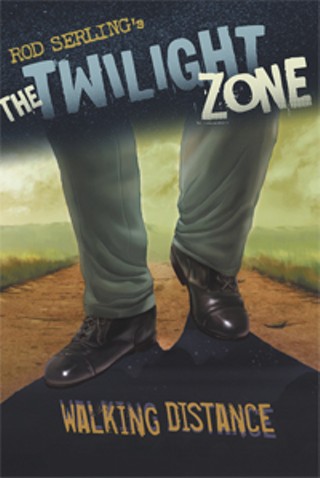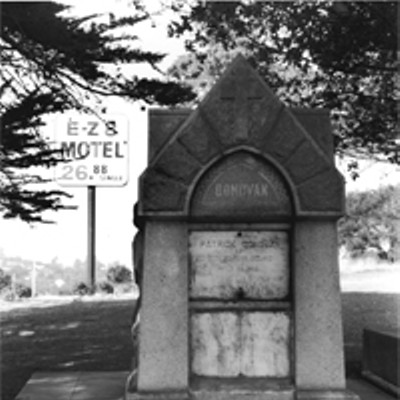PERHAPS THE first thing people will say when they find out SCAD is partnering with a publisher to put out a series of graphic novels based on The Twilight Zone is: "What took you so long?"
“I get that a lot,” laughs Anna Burgard, the college’s director of industry partnerships.
“People say that in the context of all the films that have been out that have been based on graphic novels, and the surge of graphic novels themselves,” she says. “So it’s one of those ideas that’s the right time.”
Indeed, the seminal TV series — written by the late, great Rod Serling, debuting in 1959, and imitated countless times since then but never duplicated — would seem tailor-made for a graphic novel treatment.
Wait no more, Zone fans. SCAD and publisher Walker & Company have teamed up to deliver the first two of several graphic novels in time for the series’s 50th anniversary, each adapted from the original Serling scripts by SCAD sequential art prof Mark Kneece.
Drawn, lettered, and colored entirely by teams of SCAD grads and students chosen on the basis of their portfolios, the novels go on sale in October at bookstores nationwide.
The idea was hatched during conversations Burgard was having with former Waltons screenwriter Earl Hamner Jr. about a totally different project.
“He mentioned that at one time he’d been one of the original scriptwriters on The Twilight Zone. So I was like, hmm... Twilight Zone! That could be fun for a graphic novel.”
Best introduced Burgard to Carol Serling, Rod’s widow, who eventually approved the idea.
“It was a long process, but she was lovely and lovely to work with,” Burgard says. “She was excited about the emerging artist approach to the book, and pleased with how respectful Mark Kneece has been in adapting the scripts – which has been an art form in itself.”
“I hope that from some nearby fifth dimension, Serling is smiling at the prospect of these books,” Kneece says.
Serling’s scripts, models of brevity and impact, usually involving an ironic twist, stand up well even today. But putting them into graphic novel form had its challenges.
“Serling didn’t win six Emmies for nothing,” Burgard says. “The writing is great, but then again to take it into book form took some fancy footwork. It’s a different effect than watching and hearing actors on a screen.”
SCAD sequential art professor and graduate Dove McHargue, the artist who illustrated the book titled Walking Distance, agrees.
“There’s a certain expectation people have. If they see it moving and talking first, and then they see it on the page where’s there no sound or motion, they’re expecting that pace to jump out at you like the show,” he says.
“But things that work on screen that don’t work in a comic. So there are some things that Mark had to do to change that,” says McHargue.
McHargue’s introduction to the project is humorous in itself, though perhaps more typical now that half a century has elapsed since The Twilight Zone was a television staple.
“Honestly, the first time I ever watched an episode was when I watched the episode of the book I did, about three months into the project,” he laughs.
“I do remember my dad was a big fan of The Twilight Zone. I was a big giant Star Wars geek when I was a kid, and my dad would be like, ‘How about Twilight Zone?’ I feel kind of bad about it, because I know some people would have killed to do this.”
McHargue says the scripts’ trademark subtlety was an eye-opener.
“I had always thought The Twilight Zone was like a spooky thing, maybe pseudo horror,” he says. “But it’s more about the unexpected than the scary.”
Walking Distance, which first aired in 1959, is about a man who goes back in time – time travel being one of Serling’s favorite topics – to the town he grew up in, encountering himself as a child.
“That was especially poignant to me, because two years ago I became the father of three identical triplet boys,” says McHargue. “The story was so touching, about this guy who wanted to tell his younger self to live a full life. It’s not what I was expecting.”
There’s only one thing McHargue says he didn’t like about working on the graphic novel. “We had to take out all the smoking. In my book in particular, he goes back to meet his dad and all the men were smoking pipes and cigars like men would have then,” says McHargue.
“I was kind of sad about taking out all the smoking. Especially because I’m a pipe smoker myself,” he laughs. “In my next book I’ll have everybody smoking a pipe.” cs
Rod Serlings' The Twilight Zone graphic novels by SCAD and Walker & Company will be available in bookstores and online nationwide in October.




























